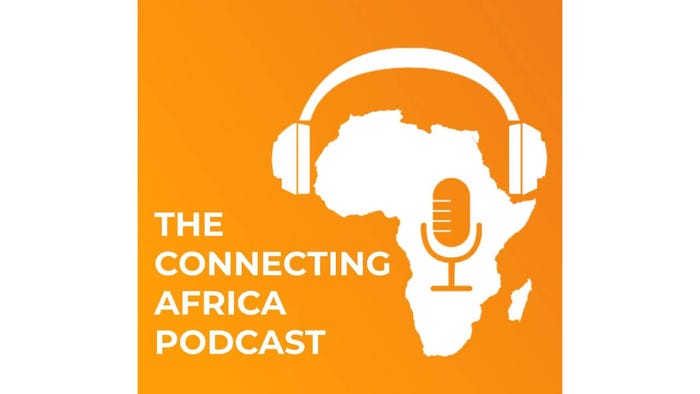GSMA Calls for End to Spectrum Cash CowsGSMA Calls for End to Spectrum Cash Cows
High spectrum prices are having negative impacts on consumers, according to a new report from the GSM Association.

High spectrum prices are having negative impacts on consumers, according to a new report from the GSM Association (GSMA).
The report, The Impact of Spectrum Prices on Consumers, claims that countries with poor spectrum policies -- which either inflate spectrum pricing or delay spectrum assignments -- are leading to millions of people being left unable to access mobile broadband services or experiencing reduced network quality.
The report shows evidence linking high spectrum prices and negative consumer outcomes, such as slow network rollout, reduced quality of service, and poor mobile coverage.
"Spectrum auctions can't be viewed as cash cows anymore," says Brett Tarnutzer, head of spectrum at GSMA.
"Any government that prices spectrum to maximize revenue now does so with full knowledge that its actions will have negative repercussions on citizens and the development of mobile services. We now have clear evidence that shows by restricting the financial ability of operators to invest in mobile networks millions of consumers are suffering," Tarnutzer adds.
The GSMA says the results of the study shows how expensive spectrum can harm -- and has harmed -- consumers in mobile markets. It claims that higher spectrum prices played a significant role in slowing the rollout of next-generation mobile networks: this was the case for 4G networks in developed countries and both 3G and 4G networks in developing countries, like those in Africa.
It also found that more expensive spectrum had a significant effect in reducing the network quality experienced by consumers in both developed and developing countries.
"Higher spectrum prices are associated with higher consumer prices in developing countries, though further research is needed to confirm whether the effect is robust. Other policy factors play a significant role in slowing network rollout (i.e. reduced coverage) and reducing the quality of 3G and 4G networks. In particular, early release of spectrum and a sufficient amount of licensed spectrum are both found to be important drivers of consumer welfare," the report reads.
In July, South Africa finally published its long-awaited spectrum policy direction for 4G. South Africa's mobile operators had been waiting for many years for high-demand radio frequency spectrum for 4G to be released by the government. Telcos have until now been forced to refarm 2G and 3G spectrum to provide 4G services, despite the rest of the world moving swiftly towards the roll-out of 5G. (See South Africa Finally Publishes Spectrum Policy Direction.)
Over the past few years Africa has seen many 4G LTE network deployments, even in small markets such as Djibouti, The Gambia and Guinea-Bissau. But some countries are still lagging behind and a lack of spectrum is often sighted as a barrier for rollout. (See Most African Countries Have Some 4G Service: Report.)
The GSMA report's findings are taken from an analysis of the period 2010 - 2017. The lobby group found that in developed countries high spectrum costs played a significant role in slowing the rollout of 4G networks and drove a long-term reduction in 4G network quality. Meanwhile in developing countries, spectrum prices were, on average, almost three times more expensive than in developed countries in relation to expected revenues. In these countries, high spectrum costs slowed down the rollout of both 3G and 4G networks and drove long-term reductions in overall network quality.
In the countries studied with the highest spectrum prices, the average mobile operator's 4G network would cover 7.5% more of the population if they had acquired spectrum at the median spectrum price, according to the GSMA.

Source: GSMA Intelligence. Covers 17 operators that experienced significant price outliers over this period, operating in Thailand, Jamaica, Austria, Pakistan, Jordan, Venezuela, Israel, Kenya, Moldova, Colombia and Costa Rica.
The timing of spectrum awards also has a significant impact on mobile coverage. The report gives the example that if an operator was assigned 4G spectrum at least two years earlier, their 4G network population coverage would on average be 11% to 16% higher (all else being equal). The rollout of 3G networks was also significantly delayed in markets that licensed spectrum late, with 3G coverage levels up to 12% lower during the rollout period in those markets.

Source: GSMA Intelligence. Covers 20 operators that only licensed 3G spectrum for the first time after 2013. Includes operators from Thailand, Afghanistan, Algeria, Iraq, Niger, Ukraine, Pakistan and Albania.
The amount of spectrum licensed to operators is also important and had a significant impact on network quality. Over the period of analysis, an additional 20MHz of 4G spectrum increased average download speeds by between 1Mbps and 2.5Mbps (equivalent to an increase of up to 15%).
The GSMA says that in developing countries there is also some evidence that high spectrum prices had a negative and statistically significant impact on 3G coverage, particularly in the first two years following the purchase of the license.
There is also evidence to suggest that higher spectrum prices drove reductions in 4G upload speeds in both developed and developing countries.

Source: GSMA Intelligence. Covers 31 operators that experienced price outliers over this period, operating in France, Hong Kong, Taiwan, Italy, Austria, Netherlands, Ireland, Singapore, Poland, Greece, Taiwan, New Zealand, Israel, Slovenia and Slovakia.
Higher spectrum prices also had a clear negative impact on developing countries' average network quality and for 3G networks in particular, including download speeds, upload speeds and latencies.

Source: GSMA Intelligence. Covers 10 operators that had 20 MHz less than the median level for both 3G and 4G spectrum holdings, operating in Ukraine, Colombia, Pakistan, Brazil and Taiwan.
"There is emerging evidence of a link between higher spectrum prices and higher consumer prices in developing countries. The results show that higher spectrum costs as a proportion of revenue drive higher prices for both voice and mobile broadband. For example, a 1 percentage point increase in the cost of spectrum as a percentage of revenue increases the monthly price of the voice basket by 0.2% and the 500 MB mobile broadband basket by 0.5%," it says.
However, the authors admit that the results in terms of pricing are not robust to all of the analytical approaches it employed so the results cannot yet be considered fully conclusive.
Tarnutzer says that overall the findings have important ramifications for governments and regulators, particularly those betting on 4G and 5G as enablers of economic growth and sustainable development.
"It's clear that unless we reverse the alarming trend of expensive auctions, this will have damaging consequences for consumers and the development of the digital economy," Tarnutzer adds.
The study concludes and recommends that:
High spectrum costs lead to negative consumer outcomes by restricting the financial ability for network investment.
Maximizing revenues from spectrum awards should no longer be a measure of success. Excessive spectrum prices can cause serious harm to consumers that outweigh any potential benefits obtained through higher auction revenues.
Auctions can and often do go wrong when poorly designed. But when well designed, auctions can be effective in allocating spectrum to those that can generate most value from it.
Artificially limiting the supply of spectrum, including through set-asides, comes with great risks. When additional spectrum is instead made available for the benefit of all, consumers experience higher quality mobile services.
Spectrum should be released to the market as soon as there is a business case for operators to use it. Early release of spectrum drives better consumer outcomes, which is important in markets where high coverage and affordable services are prioritized.
Policymakers should work with stakeholders to enable timely, fair and effective spectrum licensing to the benefit of society. A coordinated approach to mobile sector regulation by different parts of government is essential if ambitious digital inclusion and industrial policy objectives are to be realized.
5G future
The GSMA is equally concerned about securing 5G's future.
In fact the GSMA Board penned an open letter to ministers in 170 countries, calling on governments to to support the identification of spectrum for mobile at the upcoming World Radiocommunication Conference 2019 (WRC-19).
The GSMA is lobbying ahead of the conference taking place in October in Egypt where delegates from more than 190 nations will discuss and hopefully agree on how spectrum will be used.
The letter says that 5G has the potential to improve the lives of billions of people around the world in the years to come – “enhancing healthcare and education, cleaning up cities and oceans and creating new benchmarks in industrial productivity, entertainment services and smart transport”.
“Over the next 15 years, mmWave 5G will contribute US$565 billion to global GDP, and hundreds of millions more will be connected to voice, data and broadband. Fully realizing this growth will require the action of governments at WRC-19,” GSMA said.
Releasing 5G mmWave spectrum capacity is expected to contribute $5.2 billion in GDP and $970 million in tax revenue to Sub-Saharan Africa by 2034, the GSMA previously said. (See Releasing 5G mmWave Spectrum Could Give Sub-Saharan Africa $5.2B Boost: GSMA.)
The GSMA represents the interests of mobile operators worldwide, uniting more than 750 operators and nearly 400 companies in the broader mobile ecosystem.
— Paula Gilbert, Editor, Connecting Africa


.jpg?width=700&auto=webp&quality=80&disable=upscale)

.jpg?width=700&auto=webp&quality=80&disable=upscale)
.jpg?width=700&auto=webp&quality=80&disable=upscale)
.jpg?width=700&auto=webp&quality=80&disable=upscale)
.jpg?width=700&auto=webp&quality=80&disable=upscale)
_(1).jpg?width=700&auto=webp&quality=80&disable=upscale)
.jpg?width=700&auto=webp&quality=80&disable=upscale)
.jpg?width=800&auto=webp&quality=80&disable=upscale)

.jpg?width=700&auto=webp&quality=80&disable=upscale)